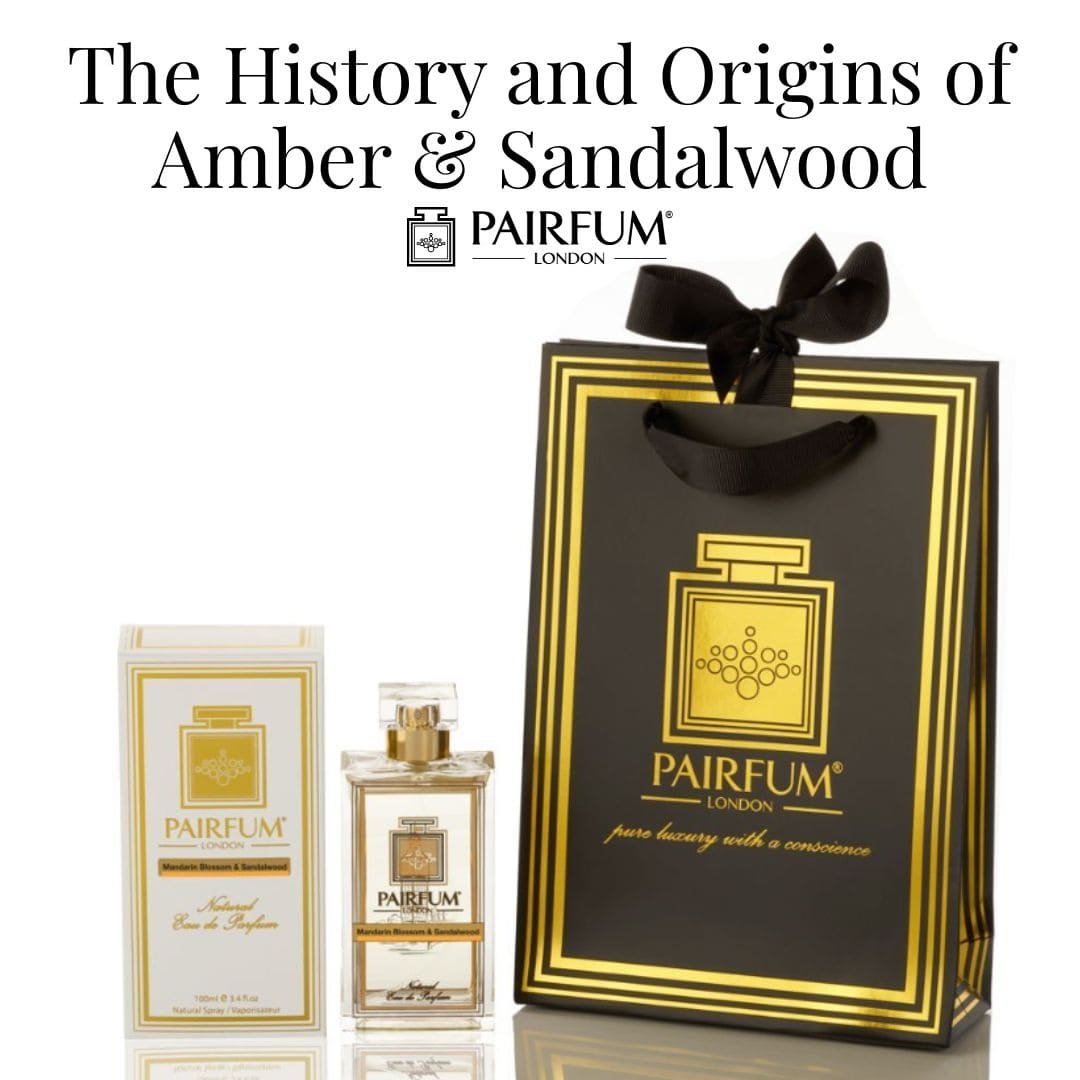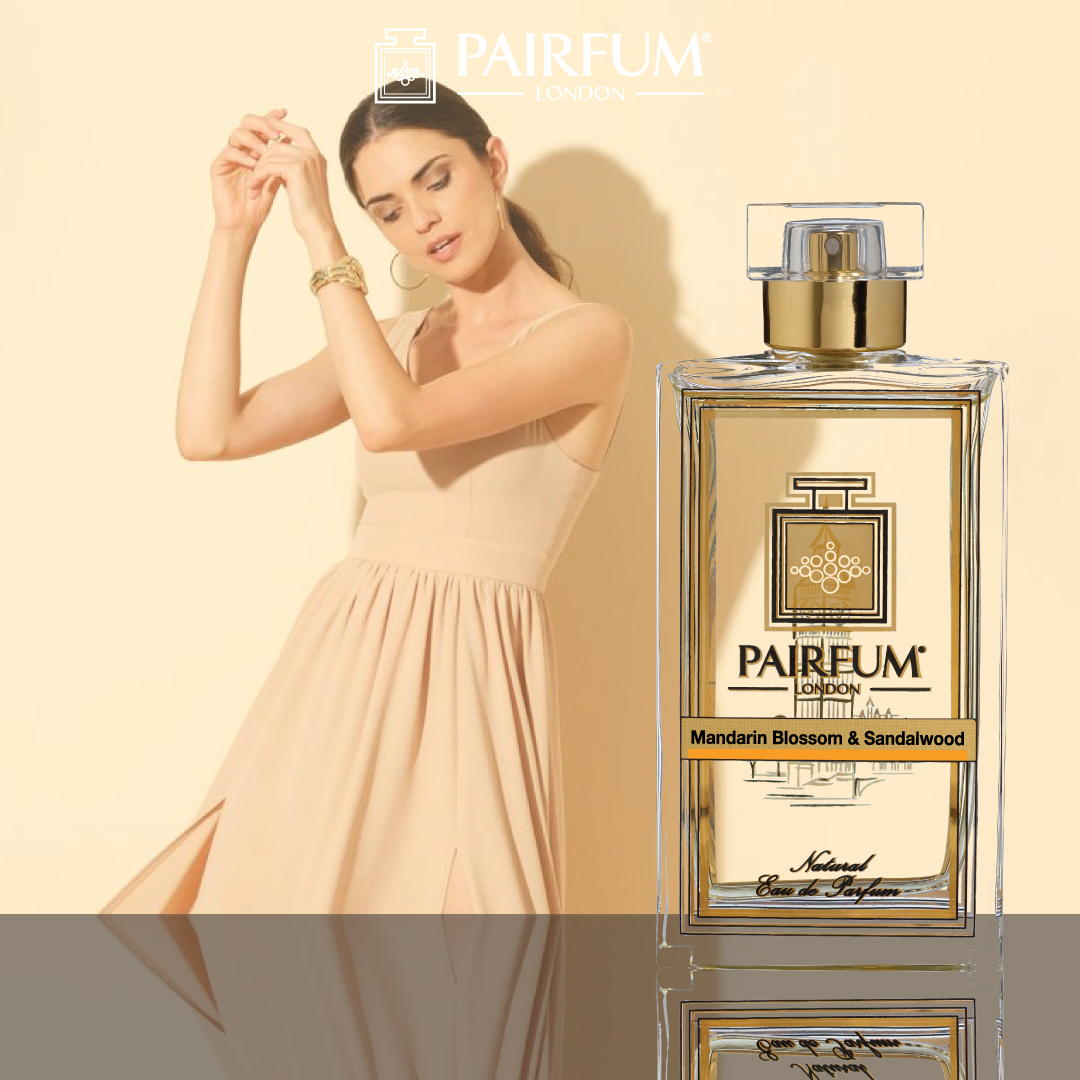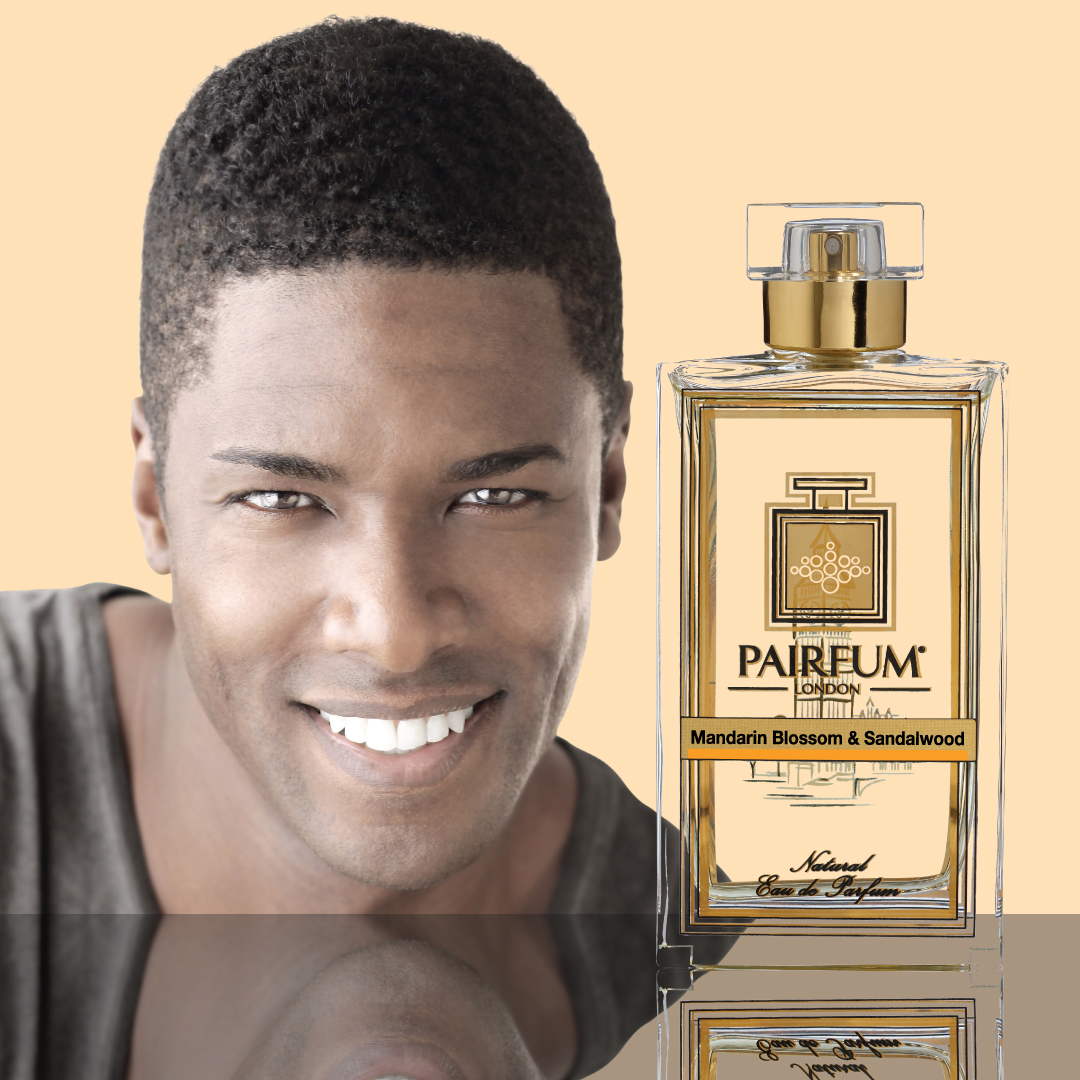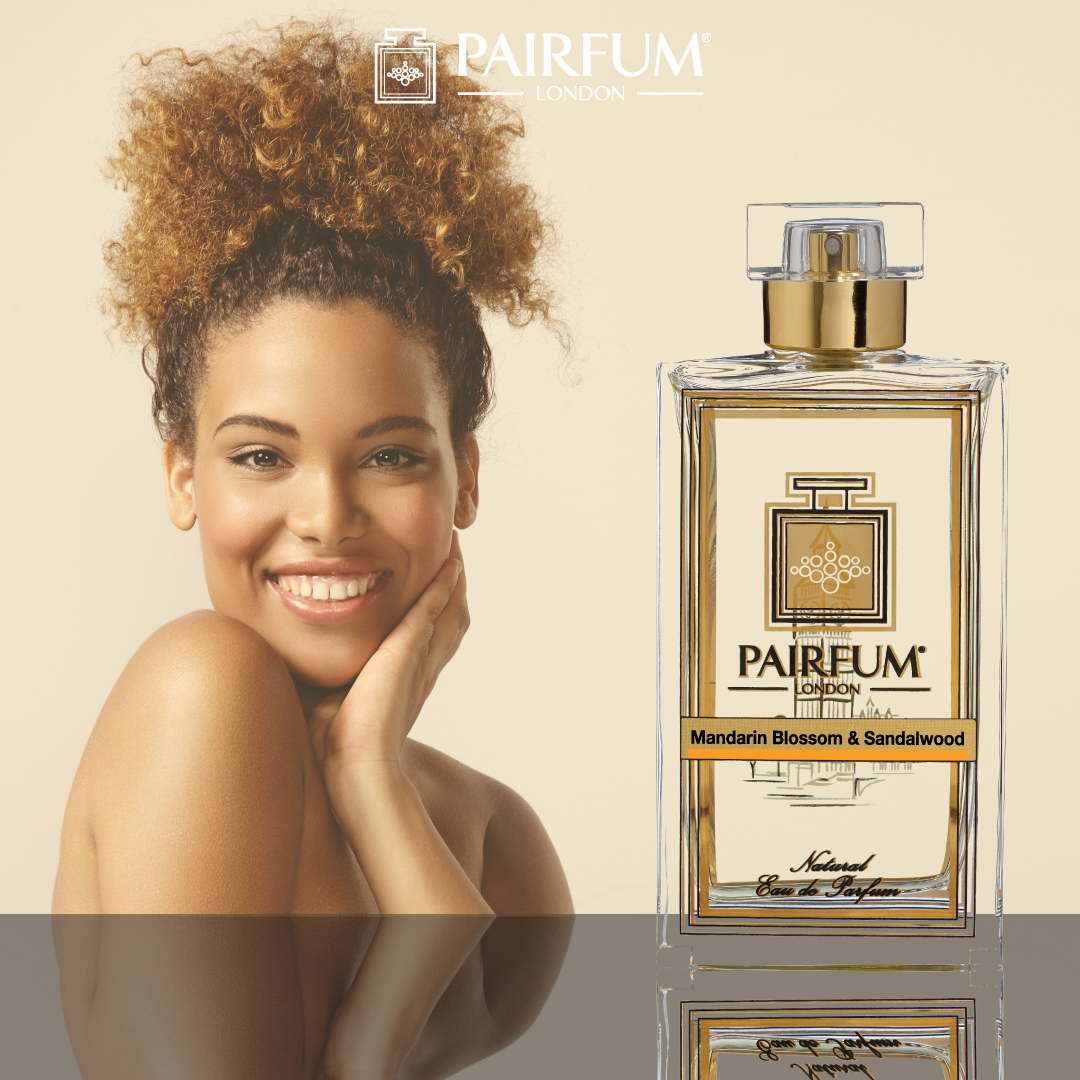The History and Origins of Amber & Sandalwood

Amber and sandalwood have been treasured for centuries due to their unique qualities and fragrant allure. These ingredients have turned simple perfumes into timeless classics. Understanding their history and origins can help you appreciate their significance in perfumery today.
Amber is not a plant but fossilised tree resin. It has been used in various cultures for its aroma and believed healing properties. Sandalwood, on the other hand, comes from the heartwood of trees in the genus Santalum. Native to India, Australia, and other parts of Asia, sandalwood has played a vital role in religious rituals and traditional medicine.
Both amber and sandalwood are known for their rich and enduring fragrances. Amber has a warm, sweet, and honey-like aroma, while sandalwood offers a soft, creamy, and woody note. These fragrances blend well with other essences, making them popular in many iconic perfumes.
By delving into their histories, understanding the different types, exploring extraction methods, and discovering iconic perfumes, you’ll gain a deeper appreciation of amber and sandalwood. Let’s uncover the enduring allure of these timeless ingredients.
Amber and sandalwood are two of the most cherished elements in perfumery, celebrated for their evocative scent profiles, cultural heritage and long-standing use in spiritual and aromatic practices. When combined, amber sandalwood creates a fragrance that feels both timeless and intimate, a blend that speaks to memory, warmth and earthy sophistication.
This article explores the origins, historical roles and olfactory richness of amber and sandalwood, while uncovering their deeper connection to the world of fragrance.


Amber: A Gem of Ancient Aromas
Amber is not a mineral but fossilised resin, formed from ancient trees over millions of years. The most prized amber comes from the Baltic region, where it was once traded as far as the Middle East via the historic Amber Road. Long before it was used in perfumery, amber was valued for its mystical properties. It was worn as a talisman, believed to possess healing powers and a calming influence.
In perfumery, amber is not usually the raw fossil itself, but a fragrance accord crafted from natural ingredients such as labdanum, benzoin, vanilla and sweet balsamic resins. This combination produces a rich, resinous aroma with soft, powdery edges and subtle hints of warmth. Amber has become a cornerstone in many perfume compositions, particularly in Oriental and woody fragrance families.
With over 41 mentions of amber throughout history and scent culture, its significance cannot be overstated. The aroma of amber continues to influence modern perfumery, with amber fragrance oil used extensively in candles, bath salts and personal care.
Sandalwood: The Sacred Heart of Fragrance
Sandalwood has an unmistakable woody aroma that is creamy, smooth and deeply grounding. Extracted from the heartwood of Santalum trees, especially Santalum album, sandalwood has been revered for centuries across India, China and the Middle East. In ancient temples, it was burned as incense during sacred rituals and used in Ayurvedic medicine for its calming properties.
Sandalwood oil is one of the most enduring ingredients in perfumery. Its gentle character makes it ideal as a base note, blending seamlessly with floral notes like rose, jasmine and lavender, or with spiced accords including clove, cardamom and pink pepper. Whether used in a perfume or a candle, sandalwood lends a sense of serenity and elegance to any composition.
With its use recorded in at least 37 traditional and modern formulations, sandalwood remains an essential building block in the palette of any perfumer.


Origins and Historical Significance of Amber and Sandalwood
Amber and sandalwood have fascinating histories that span thousands of years. Both have played essential roles in various cultures and civilisations.
Amber
Amber is fossilised tree resin, predominantly from ancient pine trees. It has been found in locations around the world, with significant deposits in the Baltic region. Amber has been used for its aromatic properties and believed healing powers since the Stone Age. The ancient Greeks and Romans valued amber as a gemstone and used it in jewellery and ornaments. Traders transported it along the famous Amber Road, a trade route that connected the Baltic Sea to the Mediterranean.
Sandalwood
Sandalwood comes from the heartwood of Santalum trees, particularly Santalum album in India. It has been prized for over 4,000 years. In ancient India, sandalwood was used in religious rituals, carvings, and Ayurveda. Temples and palaces were built using sandalwood because of its aromatic and insect-repellent qualities. In China, it was used for incense and traditional medicine. The rich, woody fragrance of sandalwood made it a valuable trade commodity, spreading its influence far and wide.
Both amber and sandalwood have transcended time, remaining integral in perfumery and other uses today. Their rich histories illustrate their lasting appeal and significance.
The Evolution of Amber and Sandalwood in Perfumery
As perfumery evolved from ancient rituals into refined artistic expression, amber and sandalwood found new life. These ingredients became foundational for crafting balanced fragrances, providing longevity and complexity to both base notes and heart accords.
Amber offers warmth, resin and a whisper of powdery sweetness, while sandalwood adds a smooth, woody depth that lingers on the skin. Their combined presence often evokes a feeling of sensuality and comfort, found in both subtle skin scents and bold, statement perfumes.
Both amber and sandalwood are featured in fragrance oils, room sprays, and candles. These applications allow the scent to extend beyond personal wear into everyday living spaces, infusing rooms with a sense of calm and understated sophistication.


A Sensory Journey: Notes, Nuance and Natural Ingredients
Fragrance is more than aroma. It’s a journey of the senses, and amber and sandalwood take centre stage in this journey. Together, they form the basis of a rich sensual fragrance, often complemented by other natural ingredients that enhance their complexity:
- Vanilla and sweet vanilla amplify the soft sweetness of amber
- Tonka bean contributes a velvety, almond-like nuance
- Citrus elements like bergamot and orange brighten the blend with fresh top notes
- Musk and warm musk add sensual undertones
- Patchouli deepens the base with an earthy finish
- Spice and spicy note provide a lively contrast to the woody calm
- Cedar and wood bolster the woody structure, adding clarity and resilience
These carefully chosen notes highlight the multifaceted nature of amber and sandalwood, turning them into versatile pillars of perfumery.
Fragrance in Daily Rituals
Beyond perfume, amber and sandalwood are widely embraced in other fragrant forms. A well-made candle using these ingredients releases a calming scent that fills the room with understated elegance. With more than 11 mentions in historical records, the use of sandalwood in candle making reflects its enduring appeal.
Candle lovers often pair sandalwood with floral notes, such as rose or jasmine, for a balanced aroma that feels both sensual and soft. When used in bath salts or home fragrance oils, amber and sandalwood create an atmosphere of quiet luxury and skin-soothing comfort.
To maintain the integrity of your candle or fragrance oil, always store it in a cool, dark place and avoid exposing it to direct sunlight. This preserves the scent profile and extends the life of your product.
Skin and Scent: A Natural Harmony
Amber and sandalwood work exceptionally well with skin, evolving throughout the day and adapting to your body chemistry. This skin-like quality makes them ideal for crafting a signature scent. Whether applied as a perfume or worn through scented products like lotion or oil, the interaction with skin enhances the warmth and depth of the aroma.
Scent memory is deeply personal, and few combinations leave a lasting impression like amber and sandalwood. Their warmth is inviting, their finish smooth, and their presence comforting.
Elegance, Sophistication and Sustainability
In a time where sustainability is vital, the sourcing of sandalwood and amber plays an important role. Due to overharvesting, especially of Indian sandalwood, ethical sourcing and sustainable plantations are now essential. Amber alternatives are also being created using sustainable, plant-based resins to maintain the exceptional fragrance of traditional amber while preserving natural ecosystems.
Their enduring use speaks to the elegance and sophistication they offer. Whether you’re drawn to their woody character, their sweet notes or their gentle warmth, amber and sandalwood remain among the most treasured elements in perfumery.


Types of Amber and Sandalwood in Perfumery
Both amber and sandalwood come in different types, each with unique characteristics. These varieties are used in perfumery to create diverse and captivating fragrances.
Types of Amber
Amber in perfumery is not just fossilised resin. It includes blends and synthetic interpretations that capture its warm, sweet aroma.
1. Fossilised Amber: Authentic amber resin is sometimes used in niche perfumes, offering a deep and earthy fragrance.
2. Amber Accord: This is a mixture of labdanum, benzoin, and vanilla. It captures the essence of amber without using fossilised resin.
3. Synthetic Amber: Lab-created, it mimics the smell of amber and is used in many commercial perfumes.
Types of Sandalwood
Sandalwood comes in several types, mainly defined by their geographical origin and the species of tree.
1. Indian Sandalwood (Santalum album): This is the most prized variety. It has a rich, creamy, and long-lasting aroma.
2. Australian Sandalwood (Santalum spicatum): It offers a slightly different fragrance, less sweet but still woody and balsamic.
3. Hawaiian Sandalwood (Santalum paniculatum): This variety has a more subtle fragrance compared to its Indian counterpart.
Each type of amber and sandalwood brings something unique to perfumery. These varieties allow perfumers to craft distinctive and memorable fragrances that appeal to a wide range of preferences.
Extraction Methods and Processing
The extraction and processing of amber and sandalwood are essential to capture their unique aromas. Each requires specialised techniques to preserve their quality and fragrance.
Amber Extraction
Amber is collected from fossilised tree resin, usually found in the Baltic region or the Dominican Republic. The extraction process involves:
1. Mining: Amber deposits are often mined from the earth. In some regions, it is collected from sedimentary rocks using tools to extract the resin chunks.
2. Collection from Beaches: Baltic amber often washes ashore. Collectors gather these pieces, especially after storms.
3. Processing: After extraction, amber is cleaned and polished. Some perfumes use raw amber oil, obtained by heating the resin slowly until it melts and releases its oils.
Sandalwood Extraction
Sandalwood oil extraction is more complex. Here are the main methods:
1. Steam Distillation: The most common method involves cutting the wood into chips, which are then steam-distilled. The steam carries the essential oils away from the wood, condensing back into liquid form.
2. CO2 Extraction: This method uses carbon dioxide to extract oil without heat, preserving more of the natural fragrance.
3. Water Distillation: An older method involves boiling the wood and collecting the distilled oil. It’s less efficient but still used in some traditional practices.
Proper extraction methods are crucial for maintaining the quality and aroma of amber and sandalwood oils. These techniques allow perfumers to use these rich and complex fragrances in their creations.


Iconic Perfumes Featuring Amber and Sandalwood
Amber and sandalwood have formed the backbone of many iconic perfumes. These ingredients have been used by perfumers to create timeless and unforgettable fragrances.
Classic Perfumes
Chanel No. 5: This legendary perfume uses amber accords to enhance its floral notes, adding depth and warmth.
Guerlain Shalimar: A classic Oriental fragrance, Shalimar features a rich blend of amber and vanilla, making it a beloved perfume worldwide.
Modern Icons
Tom Ford Santal Blush: This modern masterpiece highlights sandalwood’s creamy, woody aroma, blended with spices and floral notes.
Diptyque Tam Dao: Known for its prominent sandalwood notes, Tam Dao offers a soothing and calm fragrance experience. It combines both Indian and Australian sandalwood varieties.
Niche Creations
Byredo Gypsy Water: This niche fragrance uses a blend of amber and sandalwood to evoke memories of nature and travel. It’s light yet woody, making it unique.
Le Labo Santal 33: An iconic fragrance in niche perfumery, Santal 33 showcases sandalwood in a bold and modern mix. It’s loved for its earthy and robust character.


A Contemporary Amber and Sandalwood Creation
For those drawn to the richness of sandalwood and amber, Mandarin Blossom and Sandalwood Eau de Parfum offers a thoughtful and contemporary take. Bright mandarin and bergamot add a sparkling opening, while soft floral notes settle into a warm base of smooth amber and creamy sandalwood. The result is a fragrance that feels both light and grounded, making it an ideal signature scent with lasting appeal.
Mandarin Blossom & Sandalwood Eau de Parfum – by Pairfum London
This Eau de Parfum is composed with a focus on quality and balance. It features a carefully layered blend of natural ingredients, designed to evolve beautifully on the skin. The scent has a refined structure, with citrus top notes, floral complexity, and a long-lasting base of sandalwood and amber that lingers with gentle warmth. Ideal for daily wear, it offers a sense of quiet sophistication and comfort throughout the day.
Conclusion
Amber sandalwood is a pairing that transcends trend and time. With a heritage rooted in ritual and a future built on sustainable innovation, these two elements continue to shape the world of perfumery. Whether enjoyed in a candle, worn as a perfume, or blended into a fragrant oil, amber and sandalwood offer a deep and lasting connection to nature, memory and the art of scent.
Let their notes remind you of comfort, elegance and the quiet confidence of a signature scent.
